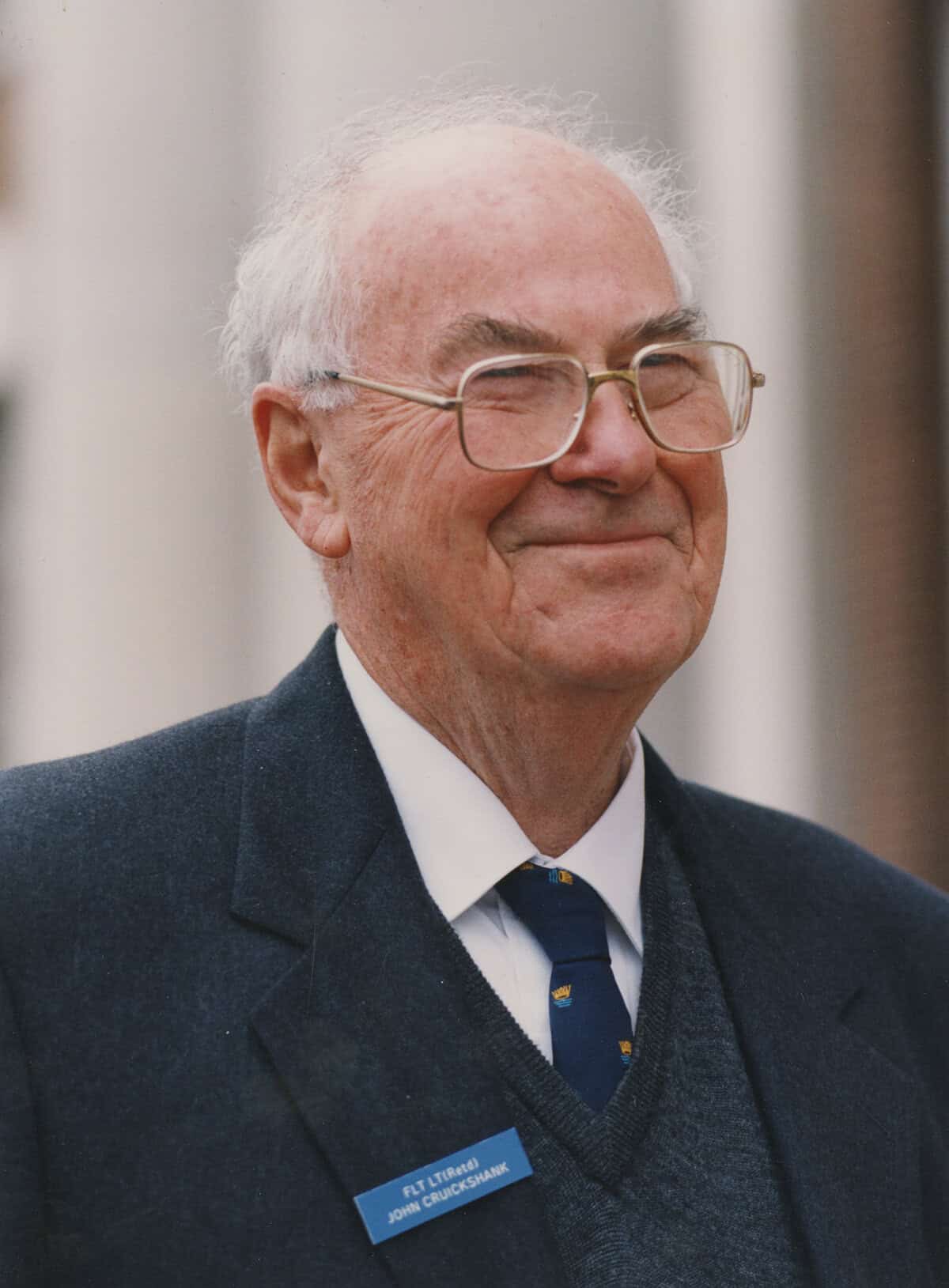Flight Lieutenant John Alexander Cruickshank VC, AE
20 May 1920 – 9 August 2025
 Flying Officer John Cruickshank in service uniform, c.1943-44. © RAF Museum.
Flying Officer John Cruickshank in service uniform, c.1943-44. © RAF Museum.
In August, the Royal Air Force Museum was saddened by the news of John Cruickshank’s passing at the age of 105. Always a modest and reserved man, John abstained from public celebrations of his achievements and gave few interviews. Respecting his wishes, we are publishing this notice after John’s private family funeral.
John was the Second World War’s last surviving combatant to be awarded the Victoria Cross, the world’s most distinguished award for gallantry which he received for his actions on the night of 17-18 July 1944.
Based at RAF Sullom Voe, the Shetland Islands, captain and pilot of the Consolidated Catalina Mark IVA, JV928, Flying Officer Cruickshank of 210 Squadron, Coastal Command, commanded a crew of 10 in an anti-submarine patrol. Following a failed attack on the German battleship Tirpitz, the patrol involved protecting a Royal Navy carrier group of three aircraft carriers and 17 warships as they returned home from Norway.
After eight hours, the crew were about to return home when, over the Norwegian Sea, west of the Lofoten Islands, John detected on radar and attacked the German type VIIC submarine U-347 amid heavy anti-aircraft fire. The Catalina’s depth charges, for attacking the sub, however failed to release, leaving the aircraft vulnerable to attack.
The Catalina was met with intense fire which killed the navigator/bomb aimer, John ‘Dickie’ Dixon, while injuring the second pilot and two other crew members. John Cruickshank was struck in 72 places, with wounds to his lungs and many to his lower limbs, but he persisted, releasing the depth charges himself to sink the U-boat.
John collapsed due to the severity of his wounds, requiring the second pilot, Flight Sergeant Jack Garnett, to take over the aircraft’s controls. Refusing treatment until the damaged aircraft was stabilised, and rejecting morphine to remain alert, John then resumed command until he felt confident the return flight was safely under control. He lost a lot of blood and drifted in and out of consciousness.
 John Cruickshank, in his latter years, visiting RAF Cranwell
John Cruickshank, in his latter years, visiting RAF Cranwell
Due to the extent of its damage, the aircraft’s landing proved extremely hazardous, while second pilot Garnett had little experience of landing in darkness. Carried to the second pilot’s seat, at his own insistence, and in great pain, remarkably John again took to the controls, where he resumed giving orders to land in poor conditions.
Under his instruction, the aircraft safely landed on the water, taxying for easy salvage. John received a blood transfusion before recovering in hospital where he remained until well enough to be awarded his Victoria Cross by King George VI on Friday 1 September at Holyroodhouse.
John’s V.C. award was cited in the London Gazette on 29 August:
… By pressing home the second attack in his gravely wounded condition and continuing his exertions on the return journey with his strength failing all the time, he seriously prejudiced his chance of survival even if the aircraft safely reached its base. Throughout, he set an example of determination, fortitude and devotion to duty in keeping with the highest traditions of the Service …
Unable to fly again due to his injuries, John was promoted to Flight Lieutenant and based for the remainder of the war at HQ Coastal Command, Northwood, Middlesex, leaving the RAF in 1946. He then made a career in banking, retiring in 1985.
John’s 104th birthday in 2024 was celebrated with a fly-past of a Catalina flying boat over his hometown of Aberdeen. For the occasion, the Museum wrote a birthday blog, which can be accessed here.